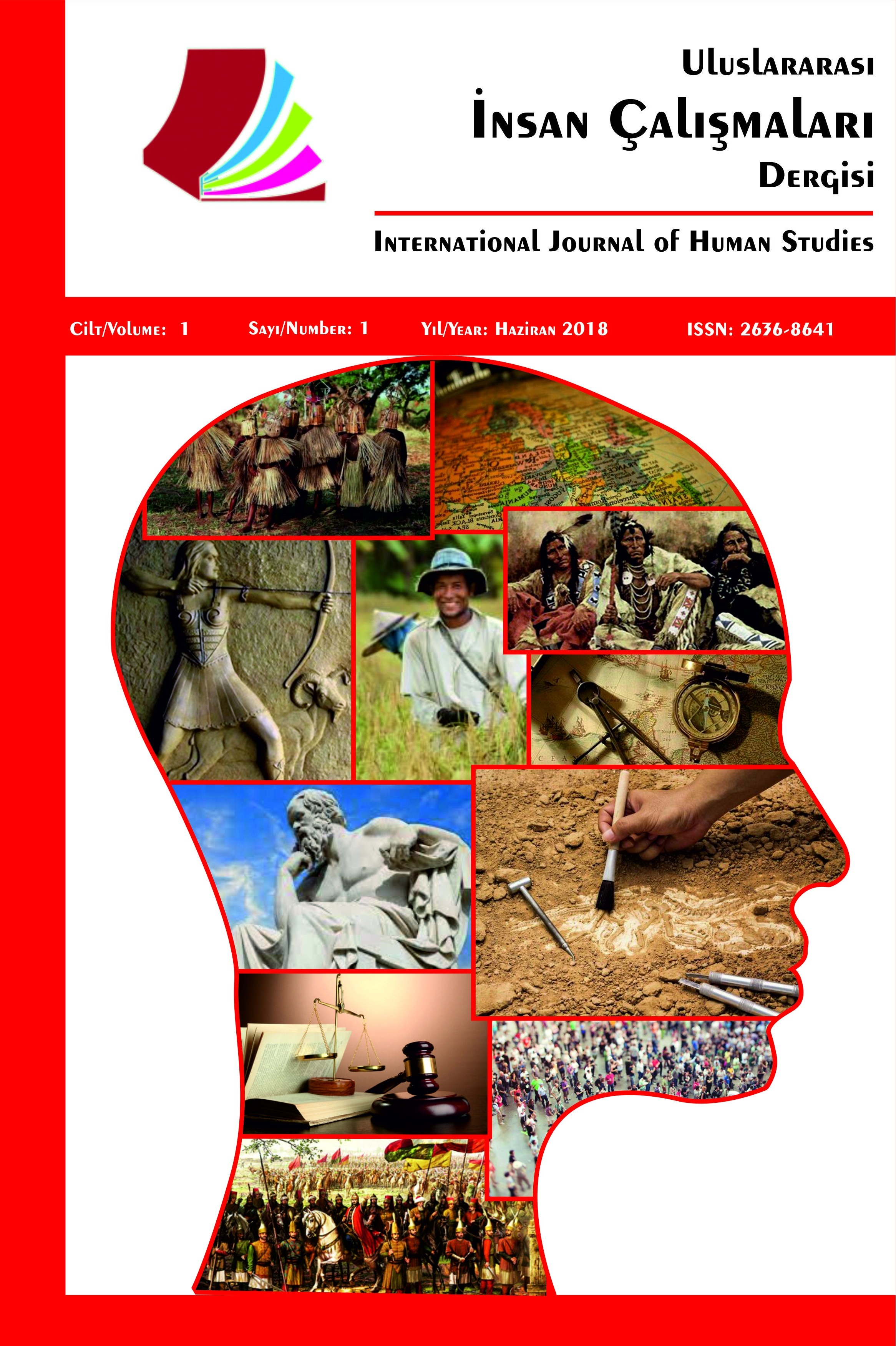Tavizle Ulaşılan Uzlaşı: Bread Givers ve The Island Within Eserlerinde Habitusun Etnik Kimlik Üzerindeki Etkisi
Anzia Yezierska, Ludwig Lewisohn, Habitus, Etnik Kimlik, Yahudi Amerikalı
Conceded Reconciliation: The Impact of Habitus on Ethnic Identity Formation in Bread Givers and The Island Within
Anzia Yezierska, Ludwig Lewisohn, Habitus, Ethnic Identity, Jewish American,
___
- Bourdieu, P. (1984). Distinction: a social critique of the judgment of taste (R. Nice, Trans.). Harvard UP. (Original work published 1979)
- Bourdieu, P. (1995). Outline of a theory of practice (R. Nice, Trans.). Cambridge UP. (Original work published 1972)
- Brodkin, K. (1998). How Jews became white folks: and what that says about race in America. Rutgers UP. Chametzky, J., Felstiner, J., Flanzbaum, H., Hellerstein, K. (Eds.). (2001). Jewish American literature: a Norton anthology. W. W. Norton& Company, Inc.
- Chávez, A. F. & Guido-DiBrito, F. (1999). Racial and ethnic identity and development. New Directions for Adult and Continuing Education, 84, 39-47.
- Derrida, J. & Prenowitz, E. (1995). Archive fever: a Freudian impression. Diacritics, 25 (2), 9-63.
- French, S. E., Seidman, E., Allen L., Aber, J. L. (2006). The development of ethnic identity during adolescence. Developmental Psychology, 42 (1), 1-10.
- Goldstein, E. L. (2006). The price of whiteness: Jews, race, and American identity. Princeton UP.
- Guzik, D. (2018). Genesis 49 – the blessing of the sons of Jacob. Retrieved from https://enduringword.com/bible-commentary/genesis-49/, on December 16, 2022.
- Howe, I. (1976). World of our fathers. Harcourt Brace Jovanovich.
- Hulsether, M. (2007). Religion, culture and politics in the twentieth-century United States. Columbia UP.
- King, A. (2000). Thinking with Bourdieu against Bourdieu: a 'practical' critique of the habitus. Sociological Theory, 18 (3), 417-433.
- Lewisohn, L. (1922). Up stream: an American chronicle. Boni and Liveright Publishers.
- Lewisohn, L. (1928). The island within. Harper & Brothers.
- New International Version (2011). Bible.com. Retrieved from https://www.bible.com/bible/111/GEN.49.NIV, on March 1, 2023.
- Nilsen, H. N. (1983). Jewish nationalism: a reading of Ludwig Lewisohn's the island within. American Studies Scandinavia, 15, 59-68.
- Phinney, J. S. (1996). Understanding ethnic diversity: the role of ethnic identity. American Behavioral Scientist, 40 (2), 143-152.
- Schuchalter, J. (2007). Modernism and modernity: the “case” of Mr. Lewisohn. Studies in American Jewish Literature, 26, 3-20.
- Sol, A. (2001). Longings and renunciations: attitudes towards intermarriage in early twentieth century Jewish American novels. American Jewish History, 89 (2), 215-230.
- Ortner, S. B. (1996). Making gender: the politics and erotics of culture. Beacon Press.
- Wilentz, G. (1991-1992). Cultural mediation and the immigrant's daughter: Anzia Yezierska's bread givers. MELUS, 17 (3), 33-41.
- Yezierska, A. (1999). Bread givers. Persea Books. (Original work published 1925)
- Başlangıç: 2018
- Yayıncı: Zeynel KARACAGİL
Dilan YAR, Sinem ULAŞ, Yılmaz MUALLA
Erken Amerikan Edebiyatından İki Öykü: Irving’in “Başsız Süvari” ve Austin’in “Peter Rugg”ında Gotik
Hamdi Gökçe ZABUNOĞLU, Esma Yağmur SÖNMEZ
“Shakespear’den Daha İyi?”: G. B. Shaw’un Postmodernizmi ve Shakespeare
Umutsuzluğun Yaşam Doyumu Üzerindeki Etkisi: Benlik Saygısının Aracı Rolü
Doğuşundan Ölümüne, Yok Oluşundan Dirilişine Yazar Figürünün Tarihsel Değişimi
Mary Wollsonecraft'ın “Kadın Haklarının Gerekçelendirilmesi” Kitabının İncelenmesi
Mehmet Fatih IŞIK, Ayşe Merve Nur MUYAN
